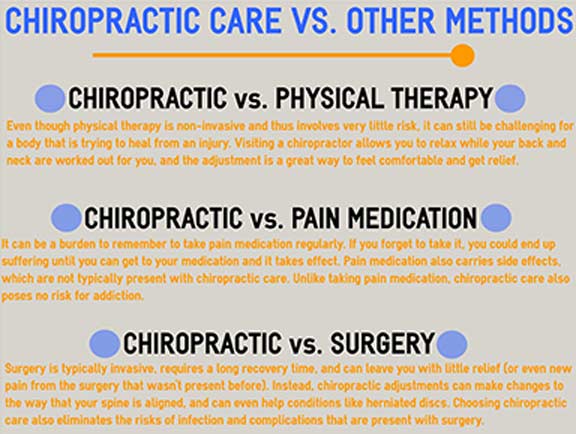The Function Of Position In Pain In The Back: Tips For Achieving And Maintaining Good Positioning Throughout Your Day
The Function Of Position In Pain In The Back: Tips For Achieving And Maintaining Good Positioning Throughout Your Day
Blog Article
Article Author-House Preston
Keeping correct posture isn't almost staying up right; it's about straightening your body in a manner that sustains your spinal column and minimizes the threat of neck and back pain. The way you sit, stand, and move throughout the day can significantly influence your back health. However how precisely can you make sure good placement regularly, also during busy days loaded with numerous activities? Let's dig deeper into the subtle yet impactful changes you can make to your daily regimen to maintain your back satisfied and healthy and balanced.
Importance of Appropriate Posture
Appropriate stance is important in keeping a healthy and balanced back and preventing pain. When chiropractor rest or stand with excellent pose, your back remains in positioning, minimizing stress on your muscles, tendons, and joints. This alignment permits the body to distribute weight equally, protecting against extreme tension on specific areas that can bring about discomfort and discomfort. By keeping your spinal column appropriately lined up, you can additionally enhance your breathing and digestion, as slouching can compress body organs and limit their performance.
Additionally, preserving good position can improve your total appearance and self-esteem. When you stand tall with your shoulders back and head held high, you show self-confidence and appear even more approachable. Good position can also make you feel more energized and alert, as it promotes proper blood circulation and permits your muscular tissues to work effectively.
Incorporating correct posture right into your daily routine, whether resting at a desk, strolling, or exercising, is crucial for preventing back pain and advertising general well-being. lower back pain in mind, a little adjustment in how you hold on your own can make a considerable distinction in how you really feel and function throughout the day.
Common Postural Mistakes
When it involves preserving great stance, lots of people unknowingly make usual blunders that can add to back pain and discomfort. chinese medicine doctor nyc of one of the most common mistakes is slouching or hunching over while resting or standing. This setting puts too much pressure on the back and can result in muscle mass inequalities and pain in the long run.
An additional usual mistake is overarching the reduced back, which can flatten the natural contour of the back and cause pain. In addition, going across legs while sitting may really feel comfortable, yet it can create a discrepancy in the hips and hips, resulting in postural problems.
Using a cushion that's too soft or too strong while sleeping can likewise impact your positioning and contribute to pain in the back. Finally, frequently craning your neck to take a look at displays or adjusting your placement often can strain the neck and shoulders. Bearing in mind these common postural errors can help you maintain far better alignment and reduce the danger of back pain.
Tips for Correcting Alignment
To boost your alignment and decrease neck and back pain, it's important to concentrate on making small adjustments throughout your everyday regimen. Beginning by being mindful of your pose. When resting, ensure your feet are level on the flooring, your back is straight, and your shoulders are loosened up. Stay clear of slouching or leaning to one side. Usage ergonomic chairs or pillows to sustain your reduced back.
When standing, disperse your weight evenly on both feet, keep your knees a little curved, and tuck in your hips. Involve your core muscles to support your spinal column. Take breaks to stretch and walk around if you have a less active work. Include exercises that reinforce your core and back muscular tissues, such as slabs or bridges.
While resting, use a pillow that supports the all-natural curve of your neck to maintain correct back placement. Prevent sleeping on your tummy, as it can strain your neck and back. By bearing in mind these suggestions and making small modifications, you can slowly correct your alignment and minimize neck and back pain.
Conclusion
Bear in mind, preserving great posture is crucial to preventing back pain and promoting spine wellness. By being mindful of your placement, dispersing weight equally, and involving your core muscle mass, you can reduce strain on your back and lessen the risk of pain and injury. Incorporate ergonomic support, take routine breaks to stretch, and strengthen your core and back muscles to keep proper alignment throughout the day. Your back will thank you for it!
